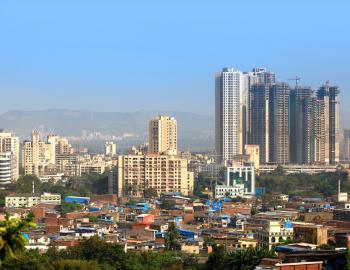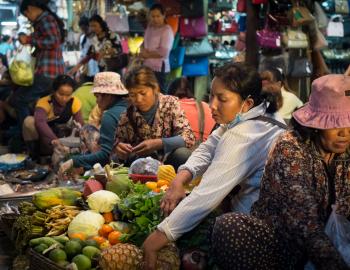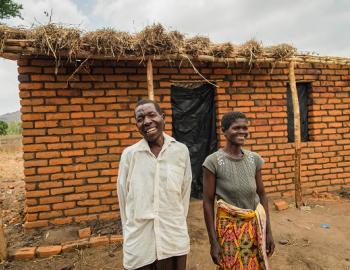Inside Story: Fostering peri-urban resilience: Gender-responsive approaches in northern India
Inside Story: Fostering peri-urban resilience: Gender-responsive approaches in northern India
Uttar Pradesh is one of India’s poorest states and its farmers have experienced considerable changes in the climate in recent years – from longer summers and harsher winters to much less predictable rains. Gorakhpur Environmental Action Group (GEAG) has been working with local people, mostly farmers on small and marginal plots, to address these climatic changes and to empower women to embrace a more climate-compatible form of development.
GEAG's recent experiences in peri-urban areas are now highlighted in a 'CDKN Inside Story on climate compatible development'.
Challenges
As rapid urbanisation occurs in Uttar Pradesh, traditional gender roles are also subject to change. Kinship networks erode, which leaves families and communities with less ability to bear shocks such as extreme weather events.
India has aspirations for its cities, as articulated in the Indian Atal Mission for Rejuvenation and Urban Transformation (AMRUT) and Smart Cities Mission. In the design of these policies, the urban population is treated as a homogeneous group; however, it is anything but that. There are differences of class, age, gender and spatial location in cities, all of which affect people’s exposure and vulnerability to natural hazards, including climate hazards. If the government wants to make cities climate-resilient and fit for the future - this case study argues - they must consider these complex factors.
Women’s participation in delivering these major climate-smart development programmes is currently low, especially in urban areas. The 74th Constitutional Amendment Act of the Government of India devolved planning to the ward, neighbourhood, and city levels, but devolution is not yet well implemented.
Challenges for truly inclusive and effective climate-compatible development in cities include:
● Urban local bodies lack sensitisation on gender issues.
● Urban local bodies, parastatal organisations, state development departments and civil society do not coordinate enough.
● Structural governance mechanisms constrain the participation of women, such as the selection of civil servants and election of representatives in a gender-blind way. This favours
men’s greater influence and power in society and, typically, men’s comparatively greater confidence in applying for these roles.
● There is not integrated governance of urban, peri-urban and rural areas. Whereas, in reality, these geographic areas interact and exist and evolve along a continuum, they are
governed in silos. Furthermore, peri-urban spaces are becoming the new ‘address’ for the poorest people.
● Natural ecosystems play a crucial role in urban resilience, and livelihoods that depend heavily on environmental resources are largely women’s work. However, there is a general lack of awareness of the gendered nature of ecosystem management and resource-dependent livelihoods. This gendered reality is not adequately recognised or addressed in policy-making and development practice.
● Collection of gender-disaggregated data should be required, but does not happen in practice.
Gender-responsive, climate-smart development solutions
As detailed in the 'Inside Story', success factors for climate-resilient development in this context include:
● Resilience interventions should recognise the varying climate impacts on different socioeconomic groups in peri-urban areas. Interventions should be attuned to the differing development needs and priorities of residents, especially those of low-income communities. Women require targeted attention, with disaggregated tracking to monitor how they are benefiting from programme measures.
● Women’s full and equal participation makes a substantial contribution to the positive impacts and sustainability of climate-compatible development programmes.
● Where possible, programmes should support community institutions to address structural governance challenges that constrain women’s participation in decision-making.
● There is a need to strengthen collective community voices for asserting rights and accessing resources for climate-resilient development.
● Programme managers can engage mass media, civil society fora and other social institutions to support climate resilience activities, in order to influence public opinion and augment the voices of marginalised groups.
● Elected representatives at city ward level (known as ‘Corporators’ in India), as well as officials in city government would benefit from learning more about gender-related interventions and outcomes, through targeted engagements by resilience programmes.



